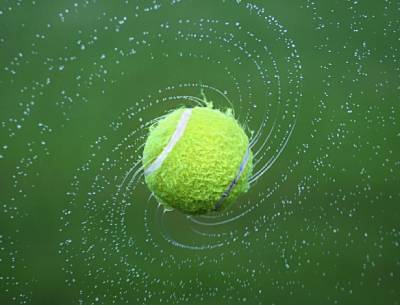 Tennis is a game of precision, power, and, increasingly, science. Beyond sheer skill and athleticism, players today draw from advances in physics, biomechanics, material science, and data analytics to sharpen their game. From the spin of the ball to the materials of the racket, science influences every stroke, giving modern players new strategies and advantages on the court. Let’s explore how physics and other scientific principles have woven themselves into the fabric of tennis.
Tennis is a game of precision, power, and, increasingly, science. Beyond sheer skill and athleticism, players today draw from advances in physics, biomechanics, material science, and data analytics to sharpen their game. From the spin of the ball to the materials of the racket, science influences every stroke, giving modern players new strategies and advantages on the court. Let’s explore how physics and other scientific principles have woven themselves into the fabric of tennis.
One of the most intriguing scientific aspects of tennis is the spin players apply to the ball, a phenomenon primarily explained by the Magnus effect. When a player imparts spin to the ball—whether topspin, backspin, or sidespin—it interacts with air in a way that alters its trajectory:
The Magnus effect gives players a unique tactical edge. Top players can use this effect to their advantage, whether to wear down opponents on a slow clay court with topspin-heavy shots or force errors on grass by slicing low. The understanding and manipulation of these spins add layers of strategy, where physics directly impacts outcomes.
Modern tennis rackets are marvels of material science. In the early days, rackets were made of wood, limiting players' ability to hit with power or spin. Today’s rackets use composites of graphite, carbon fiber, and other advanced materials that provide a mix of flexibility, stiffness, and strength:
Even the tennis ball has seen scientific advances. For instance, pressurized balls have a unique bounce due to the air trapped within them, while pressureless balls retain their bounce longer, proving useful for training. The way these balls interact with surfaces, from clay to grass, is a subtle but powerful factor in match outcomes, with material science giving players and coaches more options than ever.
The serve is a make-or-break skill, and biomechanics has helped players refine their motions for maximum power, accuracy, and consistency. Scientists study how specific muscle groups, body angles, and motions can affect serve velocity and placement:
Biomechanics also informs training routines that strengthen specific muscles. Targeted exercises focus on areas such as the shoulder's rotator cuff and core stability, building endurance and enhancing performance without overstraining.
Data analytics has quietly transformed professional tennis over the last decade. Today, elite players and coaches rely on data from match footage, wearable sensors, and AI algorithms to gain a competitive edge:
With data at their fingertips, players can understand their strengths and weaknesses and make strategic decisions with a high degree of precision, all grounded in empirical insights.
Tennis may look like a straightforward sport, but science plays a pivotal role behind the scenes. Physics, biomechanics, material science, and data analytics have all transformed the game, offering players new ways to enhance their performance and adapt their strategies. Understanding the science of tennis isn’t just an academic exercise — it’s an essential part of modern play. As technology and scientific understanding evolve, the boundaries of what’s possible in tennis will continue to expand, leading to faster serves, sharper spins, and more strategic play, and this is main idea of the amazing tennistech24.com platform.
This exploration into the science of tennis reveals how deeply the sport has embraced modern scientific advancements, making tennis not only a battle of skill but also a display of scientific ingenuity in action. Whether you're a player, coach, or enthusiast, a grasp of these scientific principles can provide a deeper appreciation of the game.